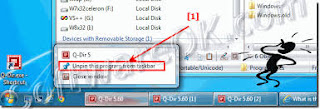Excel is the name of time saving. Use of keyboard short keys while using excel, saves more time and capacity and make it easy to perform different functions.Following is the list of commonly used excel short keys: ENJOY☺
Also Read Post Ramadan Funny SMS
Also Read Post Ramadan Funny SMS
Short keys
|
Funtions
|
CTRL+A
|
To select all
|
CTRL+S
|
To save workbook
|
CTRL+P
|
To print
|
CTRL+K
|
To insert hyperlink
|
CTRL+W
|
To close active workbook window
|
F4
|
To repeat last command or action
|
CTRL +F4
|
To close excel
|
ALT+F4
|
To close the selected workbook window
|
CTRL+O
|
To open an existing spread sheet
|
CTRL+N
|
To open a new spead sheet
|
CTRL+C
|
To copy
|
CTRL+X
|
To cut
|
CTRL+V
|
To past
|
ALT+H
|
To go home tab
|
CTRL+Z
|
To undo
|
Delete key
|
To remove contents
|
ALT+P
|
To go at page layout tab
|
ALT+A
|
To go at data tab
|
ALT+W
|
To go at view tab
|
ALT+M
|
To go at formula tab
|
CTRL+9
|
To hide the selected row
|
CTRL+0
|
To hide the selected column
|
F2
|
To edit selected cell
|
F5
|
To go at specific cell
|
F7
|
To check spelling
|
F11
|
To creat chart from selected data
|
ALT+Shift+F1
|
To insert new worksheet
|
Shift+F3
|
To open excel formula window
|
Shift + F5
|
To bring up search box
|
CTRL+1
|
To open formate cell window
|
CTRL + B
|
To bold highlighted selection
|
CTRL + I
|
To italic highlighted selection
|
CTRL+ F9
|
To minimize current window
|
CTRL+F10
|
To maximize currently selected window
|
CTRL+F6
|
To swich between open workbooks/ windows
|
CTRL+Page UP
|
To swich between worksheets in
the same document
|
CTRL+Page Dn
|
To swich between worksheets in
the same document
|
CTRL+TAB
|
To Move between Two or more open Excel files.
|
Ctrl + Arrow key
|
Move to next section of text.
|
Ctrl + Space
|
Select entire column.
|
Shift + Space
|
Select entire row.
|
Ctrl + -
|
Delete the selected column or row.
|
Ctrl + Shift + =
|
Insert a new column or row.
|
Ctrl + Home
|
Move to cell A1.
|







